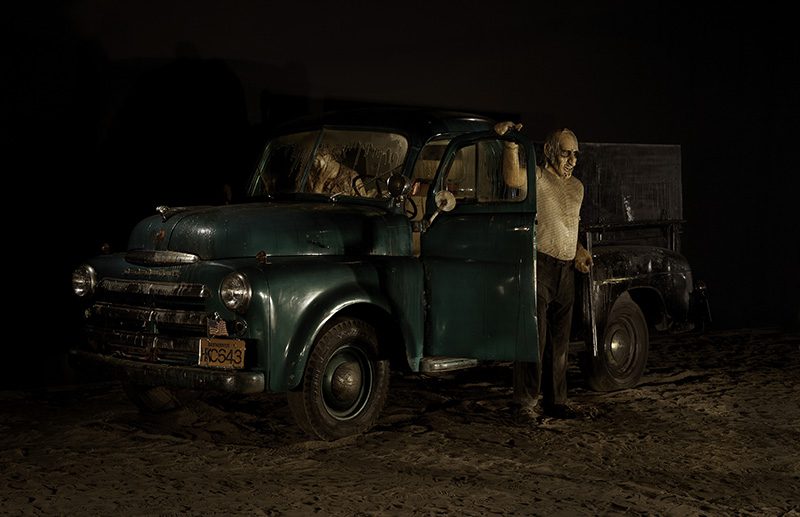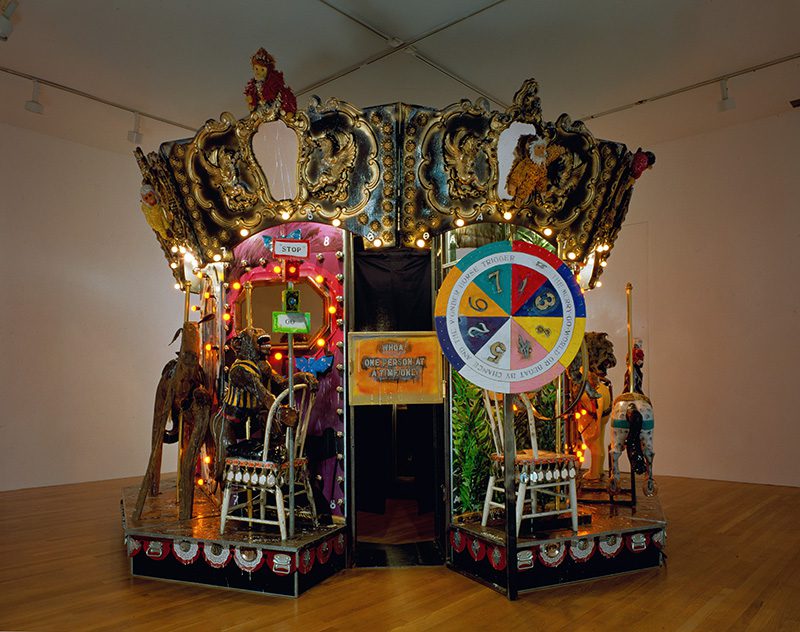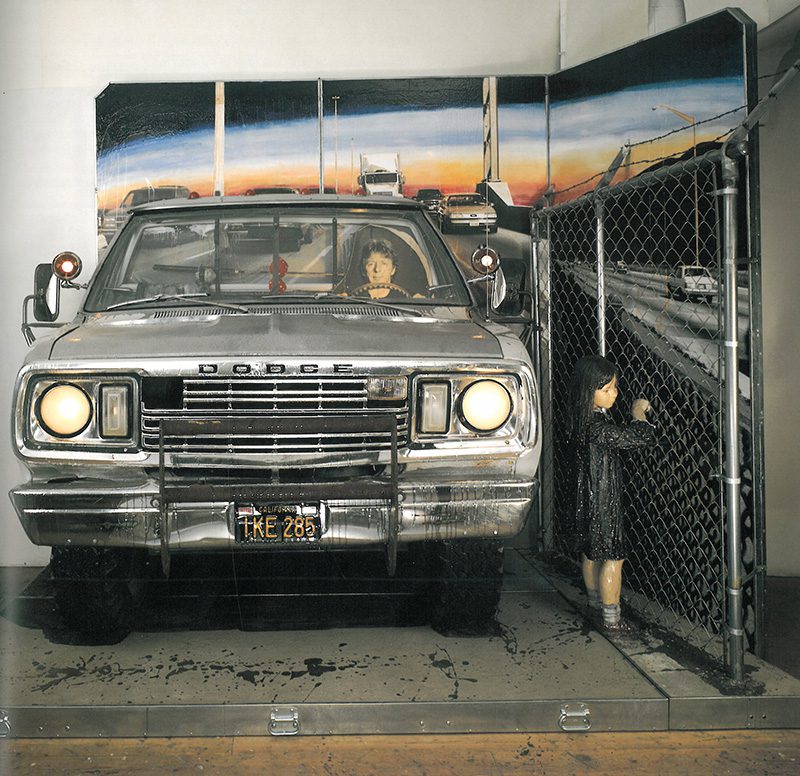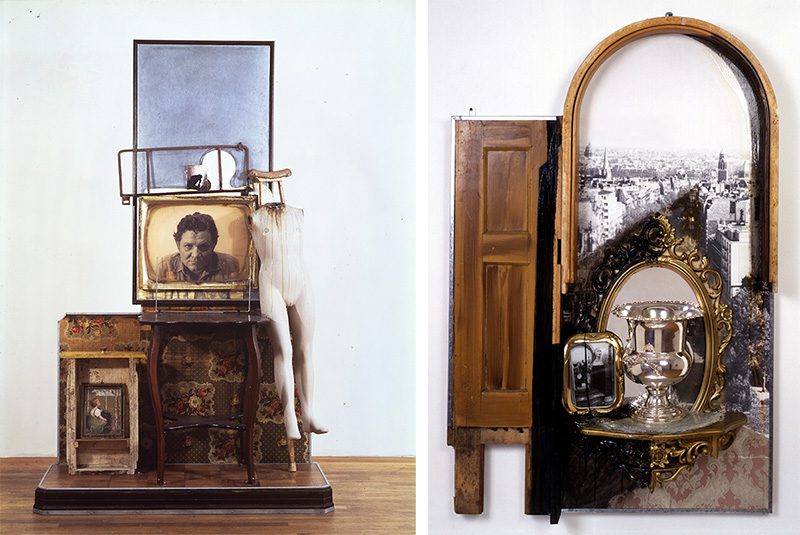ART-PRESENTATION:Edward Kienholz -Five Car Stud
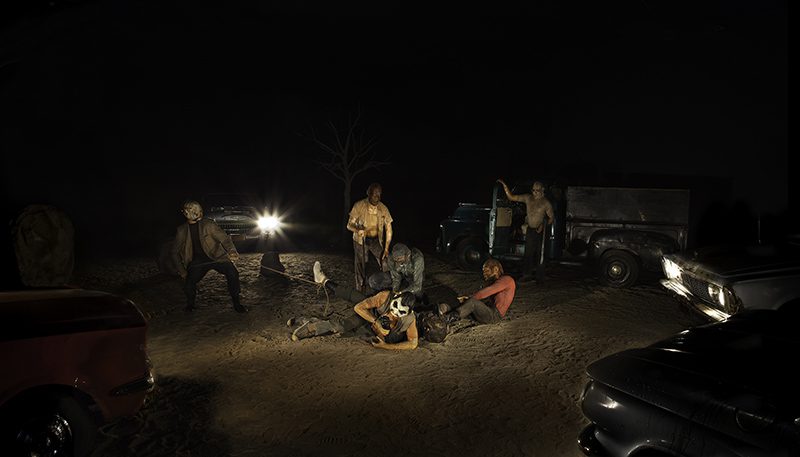 Edward Kienholz created powerful work that reflected upon contemporary social and political issues of late 20th Century America. He created life-size three-dimensional tableaux and immersive environments, composed out of the objects he found at yard sales and flea markets. From 1972 onward, he worked almost exclusively with his and artist Nancy Reddin Kienholz, who played a significant role in the conceptualization and fabrication of their later works.
Edward Kienholz created powerful work that reflected upon contemporary social and political issues of late 20th Century America. He created life-size three-dimensional tableaux and immersive environments, composed out of the objects he found at yard sales and flea markets. From 1972 onward, he worked almost exclusively with his and artist Nancy Reddin Kienholz, who played a significant role in the conceptualization and fabrication of their later works.
By Dimitris Lempesis
Photo: Fondazione Prada Archive
The exhibition “Kienholz: Five Car Stud” brings together 26 artworks including drawings, sculpture, assemblages and tableaux realized by Edward and Nancy Kienholz from 1959 to 1994, including the well-known installation that gives the title as well as documentation material on the history and making of the central work. In “Five Car Stud” Kienholz addresses the enduring violence, prejudice, and racism in America during the Civil Rights era and its aftermath. This life-sized multimedia installation depicts a group of white men attacking a black man who lies prostrate on the ground, arms pinned to his sides, as one of his attackers tries to castrate him. Surrounded by four cars and a pickup truck that illuminate the scene with their headlights, white men wearing grotesque masks are posed standing, crouching, and grappling with the black man at the center of the installation. The black figure has a double face: an internal face in wax expressing sadness and resignation, and a transparent external face that displays a monstrous grimace of terror and rage. The torso, however, is built out of an oil pan inside of which six letters float, which might form the word “nigger.” According to Kienholz, the black man had been singled out by the group of white men for having a drink with a white woman, who cowers in one of the automobiles, vomiting. Nightmarish and emotionally disturbing, the work was intended to jolt the viewer with its graphic intensity, forcing the audience to come face to face with the brutal reality of the African-American experience. The work was defined by Kienholz as the representation of the “Burden of being an American”. The work was created by Edward Kienholz from 1969 to 1972, and first exhibited at Documenta 5 in Kassel, is considered one of the American artist’s most significant works. Despite the controversy and attention that it earned from critics right from its debut, the work remained hidden from view in the storage of a Japanese collector for almost 40 years. The artwork was only presented twice again to the public, today the work is part of the Prada Collection, and is the central work of the exhibition. Among the other works of the exhibition are: “The Nativity” (1961–1964), a three-dimensional reconstruction of a church interior. The final result is a bizarre representation of a nativity scene in which the human and divine figures are substituted by commonplace elements like automobile hood ornaments, living room lamps and parts of toys. “The Death Watch” (1976), “Bout Round Eleven” (1982) and “The Twilight Home” (1983) are powerful representations of the invasiveness of television and its colonization of the popular imagination, and attempt to react critically to its pervasive stupidity and the boorish violence of mass media information. “The Bronze Pinball Machine with Woman Affixed Also” (1980), a blend of women’s legs and a pinball machine, the female body is reduced to an object of pure sexual entertainment. “Jody, Jody, Jody” (1994) was inspired by a real life event and evokes a deplorable instance of child abuse. Meanwhile, “The Merry-Go-World or Begat by Chance and the Wonder Horse Trigger” (1991–1994), which appears to be little more than a colorful carousel for children, conceals an empathetic contemplation on the random determinism of birth. The viewer is asked to spin a wheel of chance before entering the flashing lights and jolly music of the work, inside, one of eight small tableaux is revealed, describing the accident of birth and its governance on cultural, societal and economic fate. One of the last artworks produced by Edward and Nancy Reddin Kienholz “76 J.C.s Led the Big Charade” (1992–1994), this installation transforms baby dolls, wagon parts and different cultural and historical depictions of Jesus Christ into crucifixes, taking aim at religion in its institutionalized forms devoid of spirituality.
Info: Germano Celant, Fondazione Prada, Largo Isarco 2, Milan, Duration 19/5-31/12/16, Days & Hours: Mon, Wed & Thu 10:00-20:00, Fri, Sat &Sun 10:00-21:00, Fondazione Prada, Largo Isarco 2, Milan, Duration 4/2-19/6/16, Days & Hours: Mon, Wed & Thu 10:00-19:00, Fri, Sat &Sun 10:00-21:00, www.fondazioneprada.org
